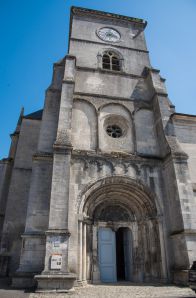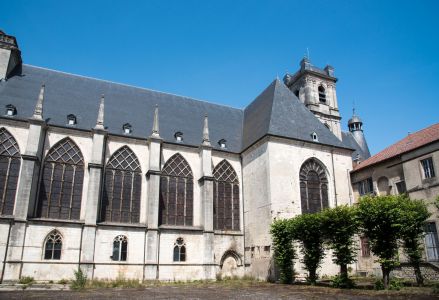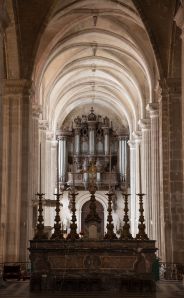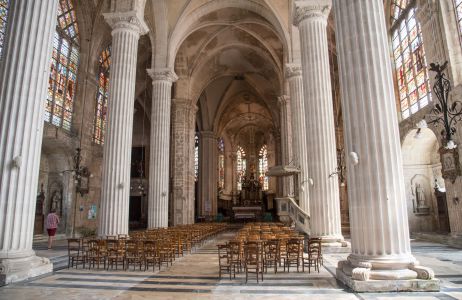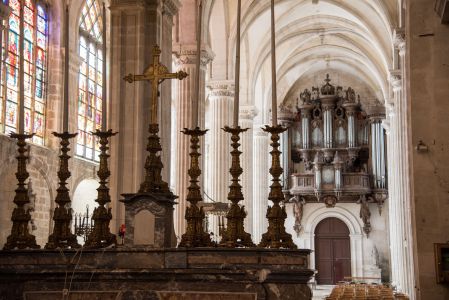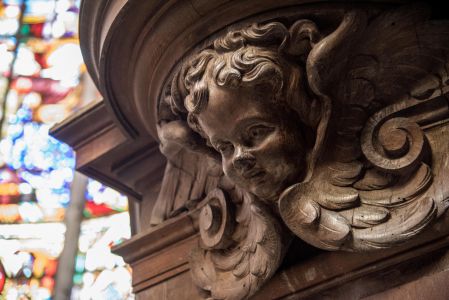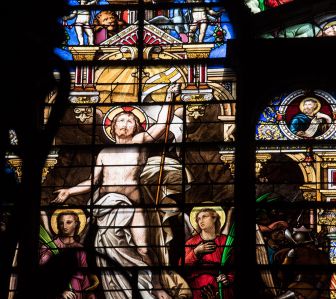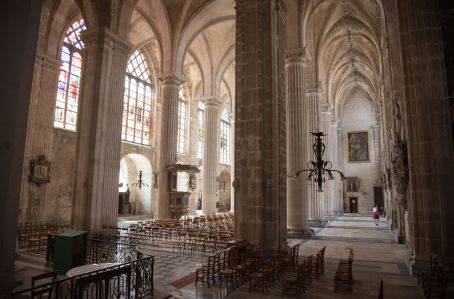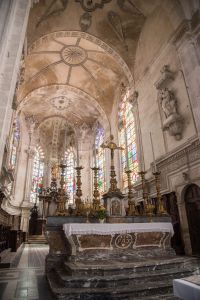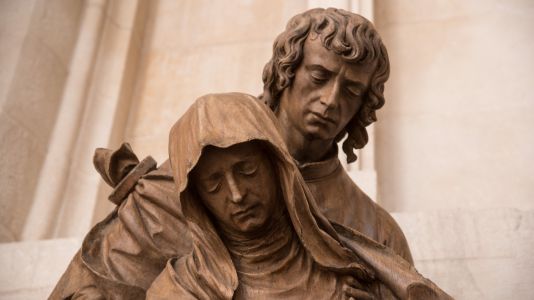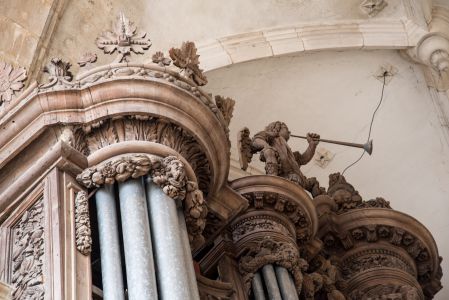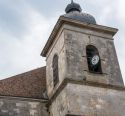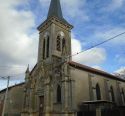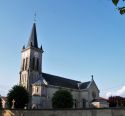Abbey church | XI-XVIII | Romanesque | Catholic Church




Map
Opening hours
01 April - 30 September
Mon 8.00 - 19.00
Tue 8.00 - 19.00
Wed 8.00 - 19.00
Thu 8.00 - 19.00
Fri 8.00 - 19.00
Sat 8.00 - 19.00
Sun 8.00 - 19.00
01 October - 31 March
Mon 9.00 - 19.00
Tue 9.00 - 19.00
Wed 9.00 - 19.00
Thu 9.00 - 19.00
Fri 9.00 - 19.00
Sat 9.00 - 19.00
Sun 9.00 - 19.00
Guided tour
+33 3 29 89 06 47
Description
The building houses extraordinary furniture, including 80 stalls and choir woodwork from 1710, a masterpiece in Ligier Richier walnut wood, the Pâmoison de la Vierge, the funeral monument of her grandson Jean dated 1608 and two organs. The great organ of the late 17th century is one of the most beautiful in Europe with its richly decorated buffet and 2 independent pedal turrets.
Translated with www.DeepL.com/Translator
Photos
Media
Remarkable elements
The Romanesque tower and its protective gargoyles
The first church, built around 815 AD, was followed by a new Romanesque building consecrated in 1068. All that remains of this period are the lower parts of the tower-porch, which once had a spire that was twice destroyed by storms. In the 18th century, a balustrade was built to replace it and four wolf-shaped gargoyles were sculpted at each corner. As well as draining away rainwater, the menacing gargoyles also served to ward off darkness when night fell on the abbey church.
Translated with DeepL.com (free version)
The pulpit
Carved in stone in the 18th century, this pulpit was used by a preacher during the service to repeat the words of the choir in the nave at a time when there were no microphones. It consists of a vat (the part where the preacher stands) and an abat-voix (a kind of canopy placed above the vat).
Translated with www.DeepL.com/Translator (free version)
The In Paradisium portal
This portal, which bears witness to the Gothic architecture of the former nave of the abbey church, was once the gateway to In Paradisium, an antiphon (liturgical refrain) sung during the funeral ceremony. It allowed the monks to enter the cloister courtyard, which was used as a cemetery between the 11th and 18th centuries. After the French Revolution, the cloister was transformed into a playground for the Lycée Ligier Richier.
Translated with www.DeepL.com/Translator (free version)
The stalls
The abbey's choir houses 80 stalls made in the 17th century by carpenter Pierre Rouby and sculptor Jean Cimar. Reserved for use by the monks during services, these carved oak seats are fitted with a saddle. Once the seat was raised, this saddle, also known as a mercy seat, allowed a tired monk to lean on it discreetly while appearing to be standing. The choir also has an organ on which is kept a statue representing the abbey's patron saint, the archangel Saint Michael slaying the dragon.
Translated with www.DeepL.com/Translator (free version)
The stained glass windows
Bringing light and clarity, the stained glass windows are the work of the talented Lorin workshops from Chartres, who were commissioned in the 1930s to rebuild the stained glass windows destroyed during the First World War. Each part of the church has a different style of stained glass: while the nave features static images of saints such as Saint Peter and Saint Theresa, the choir and transept windows depict scenes from the lives of the Virgin Mary and Christ. In the south transept, the workshops were inspired by Ligier Richier's Sepulchre to depict the entombment of Christ. The scenes in the choir are embellished with medallions paying tribute to the great men of the Abbey and the region, such as Dom Hennezon and Captain de Mauljean, a patriot from Lorraine.
Translated with www.DeepL.com/Translator (free version)
The great organ
Built in 1681, with the unusual feature in France of having pedal turrets, the great organ of the abbey church of Saint-Michel is certainly one of the most precious organ cases in 17th-century Lorraine. The instrument, built by Jean Adam at the request of Dom Hennezon, was rebuilt in 1792 by Jean-François Vautrin. During the occupation in 1917, the pipes were requisitioned by German soldiers to be melted down into munitions. By replacing the missing pipes, Jacquot modernised the instrument in 1931. Despite the various alterations made to the instrument since it was built, a number of highly interesting elements dating from the 17th and 18th centuries have survived, making it possible to reconstruct the original instrument.
Translated with www.DeepL.com/Translator (free version)
Nearby
Circuit
Treasures of the Sammiellois

Around Saint-Mihiel, bell towers regularly stand out in the hills. Push open the doors of these churches to discover the treasures of the Sammiellois. Donzelli, Ligier Richier and others await you...



